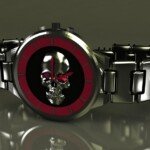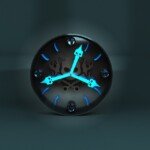Industrial Power Script: Considerations when purchasing large CNC machines
Investing in large CNC machines is a key decision for manufacturers. It’s not just scale; it’s a commitment to increase production capacity, solve complex projects and gain a competitive advantage. These machines require a lot of capital expenditure, which can be the wrong choice potentially disastrous. Whether you are processing large amounts of aerospace components, molds used in automotive giants, or structural elements for renewable energy, it requires careful analysis. This guide cuts complexity and outlines key factors to guide your investment towards success.
Core notes: Exceeded size
-
Define your needs: Work envelopes and beyond
- Work envelope: This is the most important thing. Accurately measure the maximum size (X, Y, Z) of the part you will generate Now And predict the future. Ensure that the machine not only provides adequate clearance for the parts, but also provides fixtures, tool holders and potential robot arms.
- Part weight/meter load capacity: Large parts are very heavy. Verify that the machine’s table weight capability is significantly greater than the heaviest workpiece you intend to work with, including fixed weights to prevent damage and ensure accuracy.
- Material Type and Removal Rate: Are you mainly cutting aluminum, steel, titanium or composites? Hard metal requires higher spindle power and robust machine stiffness. Estimate the material removal rate you need to make profitability and make sure the machine’s structure and motor can handle it without chatting or deflection.
-
Machine type and configuration: Match physics and functionality
- Vertical machining center (VMC): Large parts are common, providing relatively easy to set up and accessible. Large VMCs require a deep foundation due to their height and quality. Consider spindle drop under heavy duty cutting for stability.
- Horizontal machining center (HMC): Ideal for square parts (such as engine blocks) that need to be machined on multiple sides. Chip evacuation is superior. Large HMCs have excellent automation in pallet systems.
- Gantry Factory: The real titan. Provides maximum working envelope by moving the spindle to the fixing part. For the overall aerospace structure, wind turbine components and large molds are required. Stability to resist vibration is crucial.
- Click here to learn more about high-capacity CNC milling
-
The power of precision: accuracy, repeatability and rigidity
- Rigidity is the king: In large processing, the sheer force involved means that rigidity is not negotiable. Looking for heavy-duty castings, large linear guides/bearings and reinforced structures. Floppy disk machines can produce poor finishes, excessive tool wear and inaccurate size.
- Position accuracy and repeatability: Know the manufacturer’s specifications, but know that they are usually under ideal conditions. Temperature fluctuations, foundation settlement and load all affect the impact accuracy of large machines. Looking for designing machines for thermal stability, with technologies such as laser calibration for feedback.
- Vibration damping: Internal countermeasures such as polymer concrete filling or active damping systems operate vibrations for better surface surfaces and extended tool life.
-
Heart: spindle, motor and drive
- Spindle power and torque (kW/lb-ft): High material removal requires high power and high speed torque at different speeds. Understand your machining process – Heavy roughness requires constant high torque while gaining benefits from high RPM capabilities. Spindle taper size and integrity (e.g., HSK, CAT large flange) are essential for heavy cutouts.
- Feed drives and motors: Large shafts require powerful responsive servo drives and motors to accelerate and decelerate large amounts of weight accurately and effectively. Find quality components.
-
Brain: CNC control systems and software
- Control unit: Advanced controllers (Siemens, Heidenhain, FANUC) provide the processing power required for complex surface, high-speed toolpath calculations and integrate multi-axis movement on large machines.
- User Interface and Programming: Complex settings require an intuitive operator interface. Looking for proven controls in large industrial environments.
- compatibility: Ensure compatibility with your CAM software and any existing network protocols (MTConnect, OPC-UA) for data monitoring and optimization.
- Advanced features: Find dialogue programming aids, rigid strikes, thermal compensation cycles, high-speed machining algorithms and anti-collision functions.
-
Automation and Integration: Prevention in the Future
- Pallet Changer: Large HMCs and certain faucets are often combined with pallet systems for near-continuous production, thus maximizing uptime.
- Robot loading/unloading: Integrated robots are essential for efficient and safe handling of heavy-duty parts, especially in large quantities.
- Tool Management: High throughput large machines require large tool magazines (such as over 100 tools). Consider chain or matrix magazines and spindle speeds that affect tool changes.
-
Infrastructure and installation: Hidden costs
- Factory Space and Access: Moving huge machines requires large doorways, crane capacity and dedicated floor space. Ensure adequate work and maintenance.
- Power requirements: Large machines are the beasts of desire. Verify voltage (usually 480V+), ampere, and potential demand for dedicated transformers. Consider regenerative drives for energy saving.
- Base: Appropriate, isolated and vibration damping bases must be used forcing them. Poor installation can damage rigidity and accuracy. Factors of engineering and construction costs.
- Coolant system: Large machines require high-capacity coolant filtration systems to handle large volume flows and chip removal. Central systems are common.
-
Support Lifeline: Service and Maintenance
- Manufacturer/Distribution Reputation: Investigate supplier records of large machines. Ask them for their experience and reference in your industry.
- Service network and response: How do they send qualified technicians for major repairs? What is the proximity of their service center? Downtime on large machines is very expensive.
- train: Comprehensive operator and maintenance technician training is critical to safety, optimal performance and longevity.
- Part Availability: Verify the supply chain of critical spare parts. Obscure brands can lead to long delivery times.
- Total Cost of Ownership (TCO): Beyond Price Tags
- Purchase price, installation, tools, fixed, ongoing maintenance contracts, energy consumption, operator salary, software licenses, spare parts lists, and potential production downtime costs. The cheapest machines rarely have the lowest TCO in the early stage.
Navigation supplier landscape
Choosing a manufacturer or service office is as crucial as choosing a machine itself, especially when relying on the machining expertise of its parts. Partners seeking proof:
- Proven expertise: Experience in processing parts of size and complexity in the required materials.
- Technical Infrastructure: Have truly capable large-scale CNC equipment (Gantries, large HMC/VMC) to meet the specifications you need.
- Advanced features: Find partners to contribute Five-axis CNC machining. This technology provides unparalleled flexibility, reduces settings, improves the accuracy of complex profiles, and is often essential for large, complex workpieces such as aerospace structures and turbine blades.
- Material mastery: Have experience in a variety of metals (aluminum, steel, titanium, outsiders).
- Value-added services: The ability to handle everything from engineering support to post-processing (heat treatment, gilding, painting, assembly) simplifies logistics.
Work with experts when consistent quality, complexity and scale are not negotiable Great Provides important advantages. Adopt advanced five-axis CNC machining equipment and proprietary production technology. Great Excellent in solving challenges in large-scale metal parts manufacturing problems. They provide a truly one-stop solution, from custom-made precision manufacturing to comprehensive finishing services, managing the entire life cycle and ensuring seamless production of demanding industrial applications.
in conclusion
Purchasing large CNC machines is a major strategic investment that requires comprehensive technical diligence and careful planning. It’s not just about getting hardware; it’s about getting the ability to get large-scale competitive production. By carefully evaluating your specific part requirements, understanding critical machine specifications (envelope, rigidity, power, control), calculating infrastructure and support requirements, and calculating real long-term costs, you can make yourself confident decisions. Work with reputable manufacturers, especially those with professional features such as advanced five-axis machining and comprehensive service products such as Greatensure you have the expertise and technology foundations needed to maximize your massive ROI and drive manufacturing capabilities forward. Invest wisely and build strongly.
Frequently Asked Questions about Buying Large CNC Machines
1. How much space do I actually need?
Beyond the machine’s footprint. You need space for the machine, operator access (at least 3-4 feet), material installment, finished parts storage, coolant systems, and potential robot or pallet systems. Includes clearance height and installation access point of the overhead crane. Generally, the total space required is 2-3 times the basic size of the machine.
2. What are the typical power requirements for a large VMC or gantry?
This is a big difference. Small and medium-sized large machines may require 50-100 kVA. A true heavy duty faucet may require 150 kVa, 300 kVa, or more obviously 480 VAC Phase 3. Always get official specifications and consult an electrical engineer. Factors that start the current trend.
3. Why are the five-axis function of large processing often mentioned?
Large parts often have complex geometric shapes (aerospace wings, impellers, turbine housings). Five-axis machining allows:
- Complete parts in fewer settings (save time + improve accuracy).
- Angle or tilt machining function.
- Use shorter tools for better rigidity and access, especially in deep cavity.
- Implement upper surface finish on complex contours. This is a major efficiency and capability booster.
4. How do I make sure my foundation is sufficient?
Don’t guess. Machine manufacturers will provide detailed foundation specifications (concrete thickness, reinforcement requirements, anchor bolt position, allowable leveling/tolerance). Hire structural engineers who are familiar with the basics of industrial machinery. They will be designed according to machine specifications and your soil conditions. Vibration isolation pads/pile may be required.
5. What’s the difference "accuracy" and "Repeatability"?
- accuracy: How close is the machine (spindle) Just the command position In a programmed coordinate system.
- Repeatability: How the machine returns Same location In a workpiece coordinate system, even after multiple cycles or tool changes.
Both are crucial. Both stiffness and thermal stability are severely affected, especially in large machines. Due to the average error, the repeatability is usually slightly better than the accuracy.
6. How long is the typical lifespan of a good large CNC?
With rigorous preventive maintenance and timely major overhauls (e.g., guide replacement, spindle reconstruction), high-quality large CNC machines can operate efficiently for 15-25 years or more. Initial quality and operational care are crucial. The control system may need to be upgraded within this time frame.
7. Is it possible to buy a large CNC?
Potential, but requires great caution. Thoroughly check rigidity (test cutting), check maintenance records, verify control conditions, evaluate remaining thermal/position accuracy with laser calibration, and carefully check the wear of structural components (methods, ball screws). Possible cost and feasibility of major overhauls. Rental or renovate certified machines from OEMS can provide a middle ground.
8. How important is it to control a brand?
It is very important for reliability, support, programming ease and functionality. Siemens, Heidenhain and Fanuc have good robustness and advanced capabilities in the high-performance large CNC market. It is crucial to provide trained programmers and technical support in your area.
9. What safety features are crucial?
Large machines pose a major hazard. Mandatory functions include:
- Strong protection with security interlocks (doors, panels).
- Emergency stops on multiple sides.
- Light curtains or area scanners to protect operators working near large moving axes.
- Chip containment system.
- Ergonomic platform/ladder for accessing work envelopes.
10. Like the Greatlight Machine prototype, can companies run short production on large parts?
Absolutely. Although often associated with production, precision manufacturers like GreatEquipped with advanced large-capacity five-axis machine, it is an ideal partner for prototyping and short-term production. They provide alternatives to the full cost of purchasing, installing and maintaining dedicated large CNC equipment, especially for projects requiring high accuracy. Their One-stop post-processing Simplifies the process from raw materials to finishing parts.

















